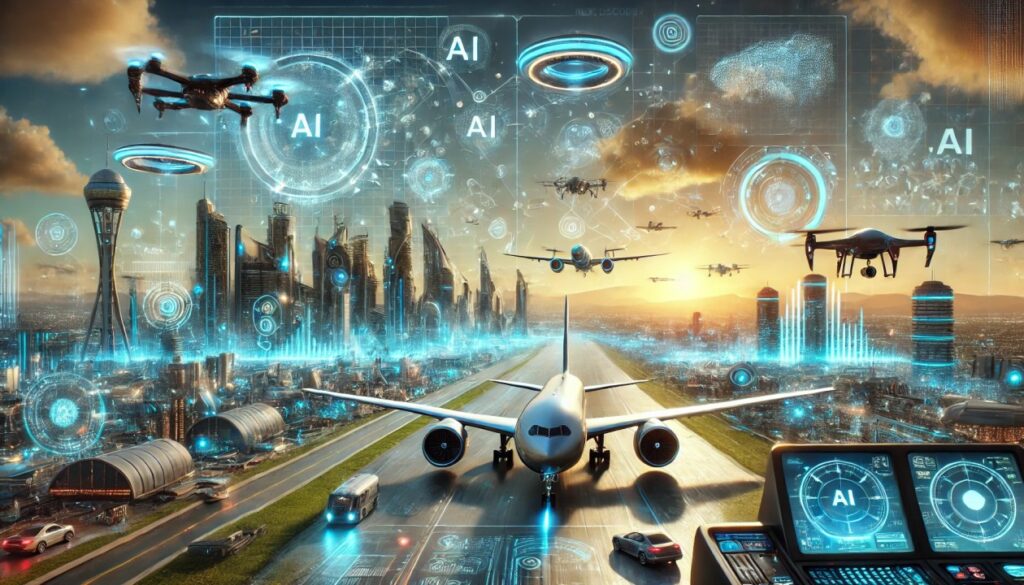As urbanization continues to accelerate, the demand for innovative transportation solutions grows exponentially. Enter Urban Air Mobility (UAM) and the future of aero engineering—two transformative forces poised to redefine how we navigate our cities and beyond. With advancements such as erosion testing playing a critical role in ensuring the durability and safety of UAM vehicles, this article delves into the burgeoning field of UAM, its implications for urban landscapes, and the evolving realm of aero engineering that supports this revolution.
Understanding Urban Air Mobility (UAM)
Urban Air Mobility refers to the use of airborne vehicles, often electric Vertical Take-Off and Landing (eVTOL) aircraft, to transport people and goods within urban and suburban environments. The concept aims to alleviate ground traffic congestion, reduce travel time, and offer a new dimension of efficiency and flexibility in transportation.
Key Drivers of UAM Innovation
- Technological Advancements: Rapid advancements in electric propulsion systems, battery technology, and autonomous systems are the backbone of UAM development. These innovations make airborne vehicles more feasible and sustainable for urban use.
- Environmental Concerns: With growing awareness of climate change, UAM offers a greener alternative to traditional ground transportation. Electric-powered aircraft emit zero emissions, contributing to cleaner urban air quality.
- Urban Congestion: As cities become more crowded, traditional transportation infrastructure struggles to keep pace. UAM provides a solution by utilizing the airspace above cities, potentially reducing road traffic and travel times.
- Economic Potential: The UAM sector promises significant economic benefits, from job creation in new industries to opportunities for real estate development around vertiports (landing and take-off pads).
The Technological Landscape of UAM
Electric Vertical Take-Off and Landing (eVTOL) Aircraft
eVTOL aircraft are at the forefront of UAM technology. These vehicles are designed to take off and land vertically, making them ideal for urban environments where space is limited. Key features include:
- Electric Propulsion: Utilizing electric motors reduces noise and emissions compared to conventional combustion engines.
- Autonomous Flight: Advances in autonomous navigation and control systems are crucial for safe and efficient UAM operations.
- Battery Technology: High-capacity, fast-charging batteries are essential for extending the range and operational efficiency of eVTOL aircraft.
Infrastructure Developments
For UAM to become a reality, significant infrastructure development is required:
- Vertiports: These are specialized landing and take-off stations designed for eVTOL aircraft. They need to be strategically located to optimize urban air transportation networks.
- Air Traffic Management: New systems and protocols are needed to manage the increased air traffic and ensure the safe integration of UAM operations with existing aviation systems.
The Role of Aero Engineering in UAM
Aero engineering plays a critical role in the development and implementation of UAM technologies. Key areas of focus include:
Advanced Materials and Structures
The design of eVTOL aircraft requires advanced materials that are both lightweight and durable. Innovations in composite materials and aerodynamics contribute to improved performance and efficiency.
Noise Reduction Technologies
One of the challenges of UAM is minimizing noise pollution. Aero engineers are developing quieter propulsion systems and optimizing vehicle designs to reduce the impact on urban noise levels.
Safety and Reliability
Ensuring the safety and reliability of eVTOL aircraft is paramount. Engineers are working on redundant systems, robust safety protocols, and rigorous testing procedures to address potential risks and enhance overall safety.
The Future of UAM and Aero Engineering
Integration into Urban Environments
As UAM technology matures, integrating it into existing urban environments will be a key challenge. Collaboration between city planners, aerospace engineers, and policymakers is essential to create a cohesive framework that supports the efficient and safe operation of airborne vehicles.
Regulatory and Policy Development
Regulatory bodies will need to develop new policies and regulations to govern UAM operations. This includes airspace management, vehicle certification, and operational standards. International cooperation will be crucial in establishing consistent regulations across different regions.
Public Acceptance and Adoption
For UAM to achieve widespread adoption, public acceptance is vital. Addressing concerns about safety, noise, and cost will be essential in gaining the trust and support of potential users. Engaging with communities and providing transparent information about the benefits and impacts of UAM will help facilitate this acceptance.
Conclusion
The future of Urban Air Mobility and aero engineering is on the cusp of a major transformation. With ongoing advancements in technology, infrastructure, and regulatory frameworks, UAM has the potential to revolutionize urban transportation and redefine how we experience our cities. As we move forward, the collaborative efforts of engineers, policymakers, and urban planners will be crucial in realizing the vision of a more connected, efficient, and sustainable urban future.
Embracing these innovations not only promises to alleviate current transportation challenges but also paves the way for a new era of mobility that harmonizes with the evolving needs of modern urban life. The journey towards a future with UAM is just beginning, and the possibilities are truly boundless




Comments are closed.